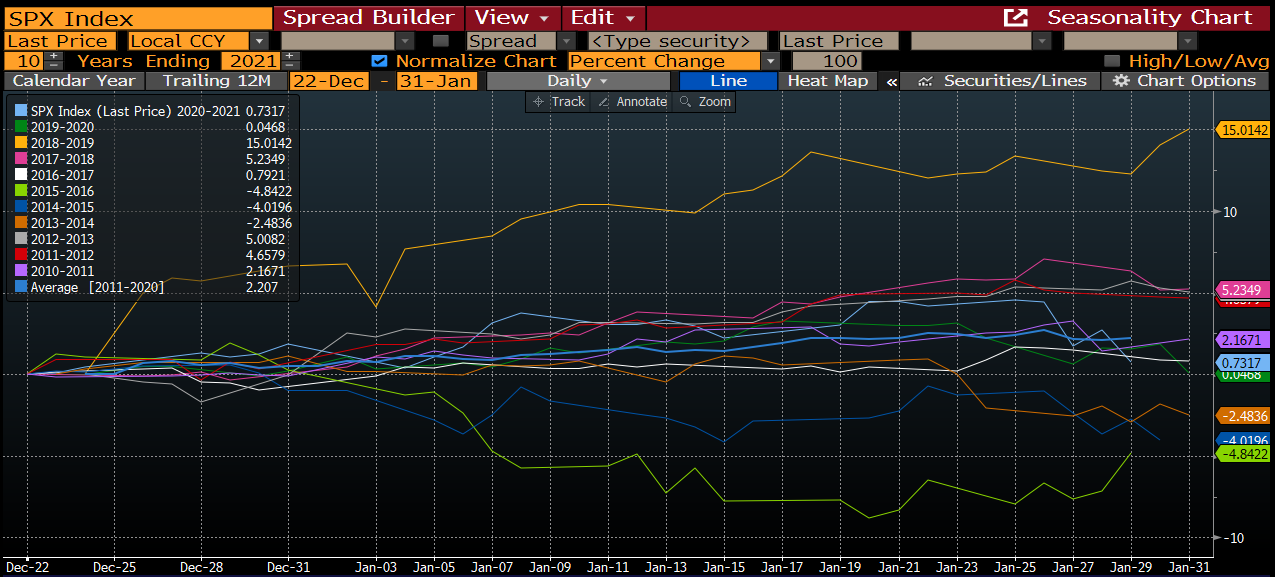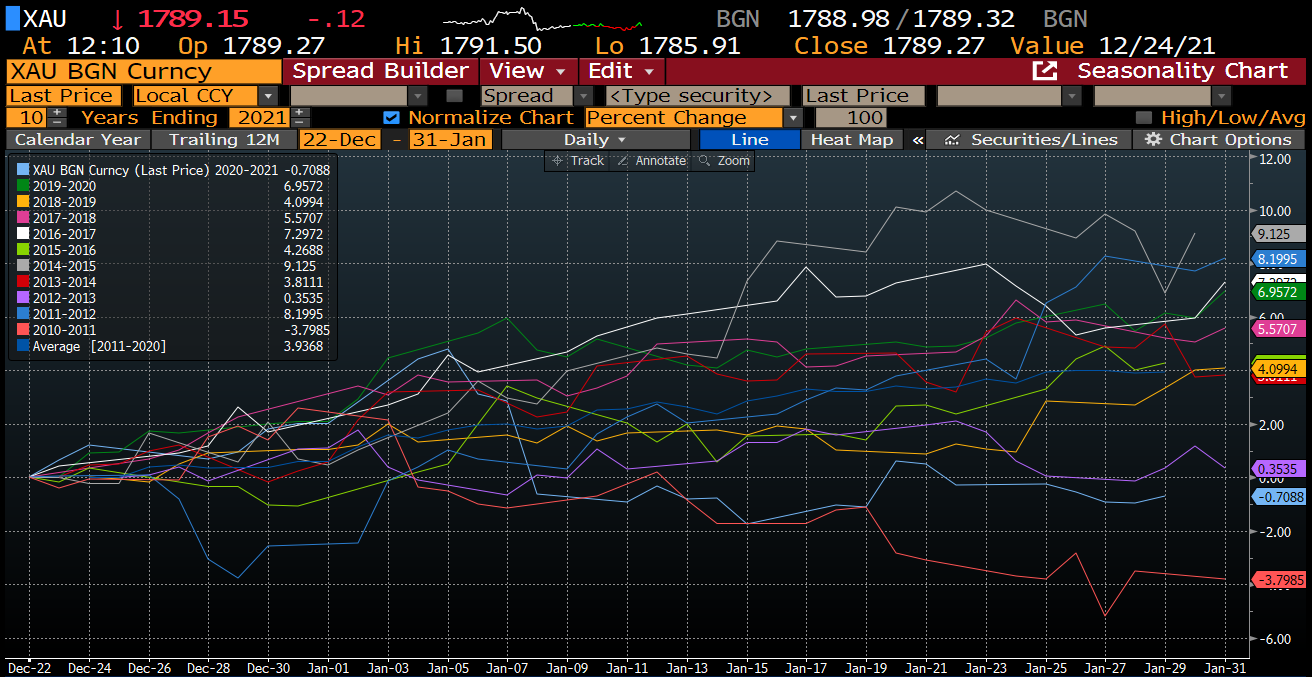Quite a lot is said about the seasonality at the end of the year. In the case of indices, it is often associated with the Santa Claus Rally and the January Effect. Today we will look at what the seasonality looked like in the last 10 years, taking into account the last week of December and the entire January, for three very popular instruments - US500, Bitcoin and gold.
US500
 In the case of the S&P 500, the end of the year is very unclear, but as time passes, especially in the second half of January, the situation becomes clearer. In the last 10 years, between the end of December and the whole of January, declines were recorded only three times. However, apart from one extreme case (2018-2019), the increases in these 5-6 weeks barely exceeded 5%. Source: Bloomberg
In the case of the S&P 500, the end of the year is very unclear, but as time passes, especially in the second half of January, the situation becomes clearer. In the last 10 years, between the end of December and the whole of January, declines were recorded only three times. However, apart from one extreme case (2018-2019), the increases in these 5-6 weeks barely exceeded 5%. Source: Bloomberg
Bitcoin

In the case of Bitcoin, the situation begins to get interesting from the very turn of the year. Usually during this time, other markets are closed or there is a low volume, causing retail investors to move to the cryptocurrency market. The increases at the beginning of the new year were significant, but from around the 2nd week of January the market was stabilizing. Source: Bloomberg
Gold

As you can see, the end of the year can be good for gold. In most cases, you can see a 2-3% increase in the last week of trading. Moreover, the January effect should also take place on the gold market. After all, in the last 10 years, we only had 2 downturns in those few weeks. Source: Bloomberg
Of course, seasonality is not a guarantee that the situation will repeat itself. Nevertheless, it can help us analyze potential patterns. The end of the year is a specific time for all markets due to holidays, trade restrictions and limited volume. Hence, it is possible that the markets, or at least the investors, may behave similarly as they did in the past.
US100 loses 0.5% 📉Meta shares decline extends on AI CAPEX worries & Deutsche Bank remarks
CHN.cash under pressure despite positive Trump remarks 🚩
Wall Street optimism tempers amid falling odds of December Fed rate cut
DE40: Decline of sentiment in Europe


